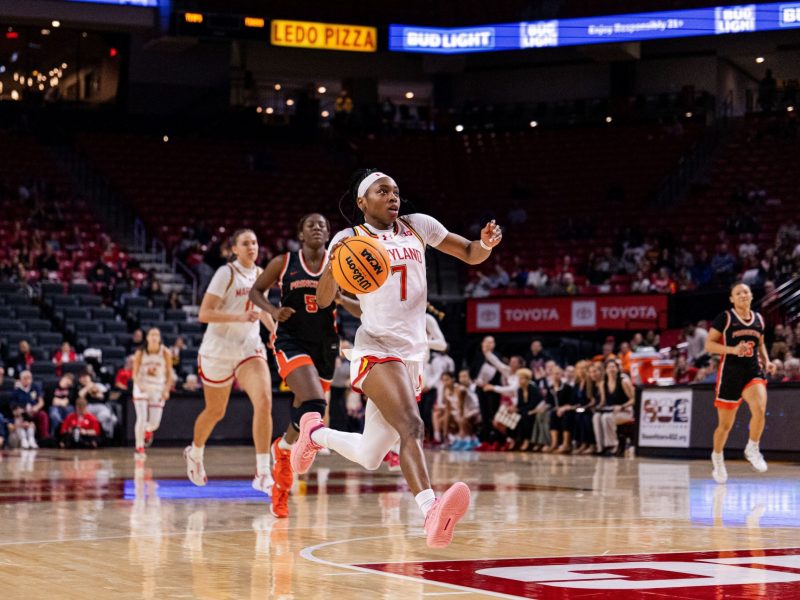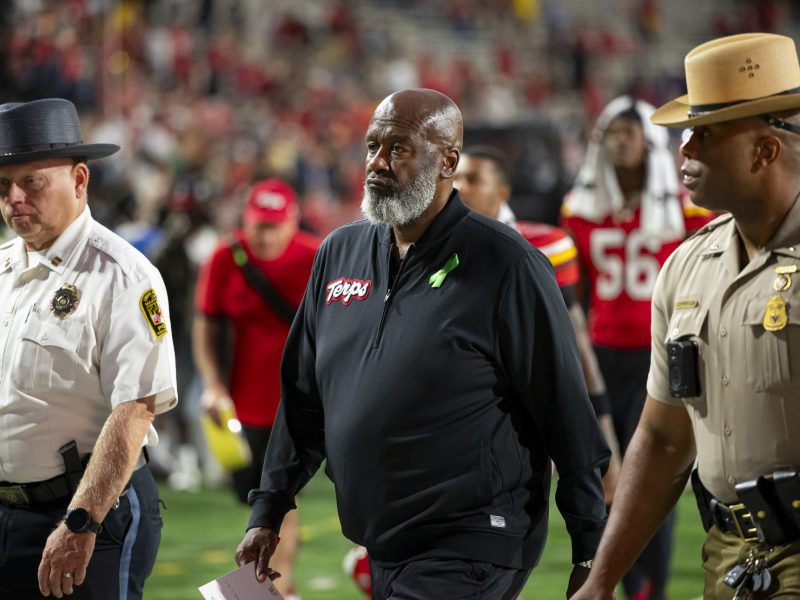Maryland volleyball finished with the fourth-fewest Big Ten wins last season. With a retooled roster this year, it felt hard to believe this season could go much worse.
But the Terps have gone 1-13 in conference play so far — the second consecutive year they’ve started with such a record — and sit last in the Big Ten in winning percentage.
The team’s struggles stretch back to when coach Adam Hughes took over in 2018. Maryland’s conference record is 46-108 and it hasn’t finished above .500 in any season under Hughes — with tendencies emerging that contextualize the program’s woes in his tenure.
“We don’t take the court with the confidence we should in ourselves, and that’s kind of what’s hindering us right now,” junior Eva Rohrbach said.
Offensive output has been Maryland’s most glaring flaw this season, especially against Big Ten opponents. The Terps’ 10.13 kills a set, 9.52 assists a set and .146 hitting percentage all rank last among Big Ten teams.
While this season has been especially alarming, it isn’t an anomaly under Hughes.
[Maryland volleyball’s offense collapses in home losses to Ohio State, Michigan]
The Terps have hit below .200 against conference opponents in every season of Hughes’ tenure. He thinks that consistency has plagued Maryland.
“It’s probably the consistency of playing high-end ball for long periods of time,” Hughes said. “I don’t think we have that sort of high end [consistency] for long periods of time … to do it for a long time is hard.”
In close, late-set moments, the Terps’ issues have exacerbated. Maryland dropped a pair of five-setters this season against Penn State and Michigan State.
The Terps opened conference play last season with consecutive five-set losses to Northwestern and Iowa. Maryland blew a 2-1 set lead in the Northwestern match and lost by a point against the Hawkeyes.
Even in Hughes’ first season, the Terps won the first set of a match against No. 16 Purdue by 10 points, only to lose the next two — each by four or fewer points.
Junior outside hitter Sydney Bryant said many of the situations come down to mentality.
“The [coaches] work hard on trying to get us back to just focusing on doing our jobs, not thinking too much about the things that are necessarily not going right,” she said. “Getting back into the mental state of, ‘We can do this, just keep your eyes on the prize.’”
Beyond the court, there’s also the transfer portal that has hindered Maryland. Talented players for floundering programs have received plenty of opportunities to find new teams.
[Maryland football unravels in fifth straight loss, 35-20 at Rutgers]
For a Terps team that hasn’t made the postseason since 2005, it’s tough to justify a vision for the program to top players. While the Big Ten’s top and even middle-tier teams improve through the portal, the Terps are heavily limited. Hughes said he’s focused on making the most out of the transfers he can land.
“Anastasia Russ transferred from Pitt and was an all-conference player for us. Samantha Schnitta did the same — transferred from Ole Miss in her senior year and was an all-conference player,” Hughes said. “AJ [Malual] transferred and she’s on track to potentially be an all-conference player.”
With new leadership at Maryland athletics, including first-year athletic director Jim Smith, how Hughes finishes the 2025 campaign could determine his future. Nearly a decade’s worth of losing seasons doesn’t exactly inspire confidence.



